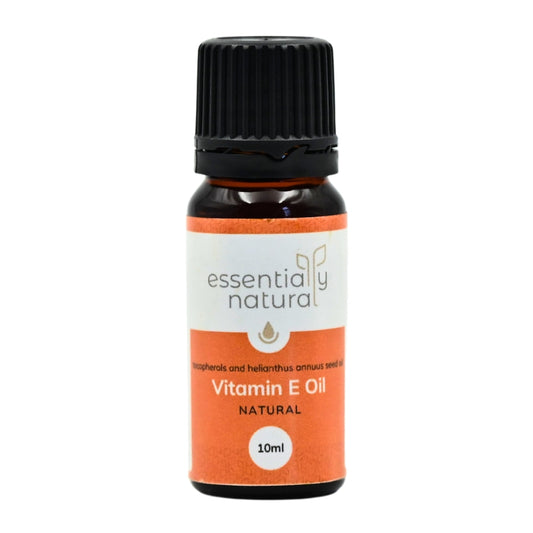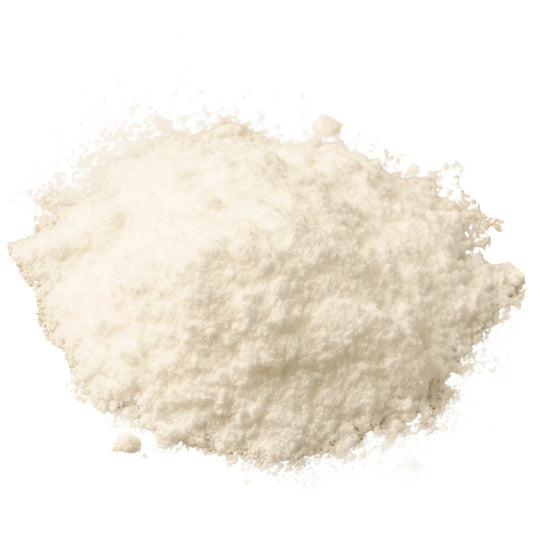
Green Tea For Skin
Juliette van der MeerSome say there are two types of people in the world, the coffee drinkers and the tea drinkers. We definitely are tea drinkers and one of our favourites at Essentially Natural is green tea, which just happens to be the star of our new blog series.
Apart from being a popular beverage, green tea has other applications, particularly in the skin and beauty department. Long used in Korean beauty (K-beauty) skincare treatments, green tea, Camellia sinensis, is absolutely fabulous for skin and if you aren't already incorporating it into your routine, you need to start. Let's find out why.
Why is Green Tea Good For You?
Green tea is one of the most well researched cosmetic actives and you can find numerous scientific papers on the internet detailing the studies performed with it. But we will break down the important parts for you here.
Firstly, you need to have a look at green tea's chemistry makeup to fully understand why it is so good for us. If you find chemistry a bit boring, you can skim over the next few paragraphs but make sure to take away the keyword, antioxidant!
The Chemistry of Green Tea
The main chemicals found in green tea are the polyphenols, which have two main subclasses: flavonoids and phenolic acids.
Flavonoids
Flavonoids can be further broken down to flavanols, of which the catechins are the most active antioxidants. There are four catechins, called the epicatechins, present in green tea, but the most prolific of them is epigallocatechin gallate (EGCG). EGCG is a potent antioxidant that has the ability to reactivate dying cells, improve moisture retention in skin and increase cell proliferation (therefore good for wound healing and skin renewal).
It also contains oligomeric proanthocyanidins (OPCs) which are some of the greatest antioxidants known. These OPCs inhibit free radicals and enzymes that break down collagen and elastin in the skin, essentially helping to preserve the skin's suppleness and elasticity. Other notable flavonoids present in green tea include quercetin, myricetin and kaempferol. Quercetin has many important benefits but for the sake of brevity I won't go into it so please Google it for more information.
Phenolic Acids
Green tea is also rich in amino acids, particularly theanine, as well as the alkaloids caffeine and theobromine (also present in cocoa and good for heart health), and the other class of polyphenols, phenolic acids. An important phenolic acid found in green tea is gallic acid, which is another powerful antioxidant.
What Are the Properties of Green Tea?
Between the presence of the polyphenols, alkaloids and amino acids, green tea has four chief properties:
- Antioxidant
- Anticarcinogen
- Anti-Inflammatory
- Anti-Radiation
As we have seen, green tea contains many powerful antioxidants, making it overall one of the best antioxidants available, even better than Vitamin C and Vitamin E. In vivo and in vitro studies have also shown green tea extract to demonstrate inhibitory effects on cancer cells and block the cell cycle of cancer cells.
Polyphenols are strong anti-inflammatories so green tea may assist in bringing down inflammation. In another interesting study, lab tests showed that the polyphenols present in green tea increased the survival rate of cells that were exposed to ionising gamma radiation, making green tea a potential anti-radiation agent.
Can You Use Green Tea as a Toner?
Green tea, like other teas, contains tannins, another group of polyphenols. These have astringent properties, making green tea a great toner. Green tea is also anti-microbial and decreases sebum production, making it good for treating acne. It can also reduce the appearance of red, inflamed skin, and calm skin conditions such as rosacea, psoriasis and even dandruff.
Polyphenols protect Vitamin C from oxidising. Vitamin C is important in collagen synthesis, so green tea indirectly protects and prolongs collagen production in the skin. Decreased collagen leads to increased wrinkle formation and other signs of aging.
More Properties of Green Tea
- Green tea applied to the skin boosts skin hydration by reducing transdermal water loss and improving water retention.
- Another property of green tea is that it is great for oral hygiene. By inhibiting bacteria, green tea can prevent cavity formation and gum disease and helps prevent bad breath.
To summarise green tea's effects on the skin:
It is firming, anti-aging, depuffing and a caffeine wake-me-up. It has anti-melanogenesis (pigmentation) properties and is rich in antioxidants that fight free radicals and the signs of aging. It is intensely moisturising. Green tea can help even your complexion and smooth wrinkles. Your skin will just feel instantly better for using green tea!
Making a green tea botanical infusion
Please don't make large batches of green tea infusion without using a preservative, or it will probably oxidise and go bad in a short period of time. These recipes are designed to be made in smaller fresh batches wherever possible, but we will also include a preservative to increase shelf life.
Method:
- Prepare your botanical infusions with distilled water, or at the very least, boiled and slightly cooled filtered water. Making up an infusion is very much like making tea. Green tea is best using water at 82 ℃, as boiling water may 'cook' the delicate green tea leaves. If you are using the powdered version of green tea leaves like we are, then you might want to drop the water temperature even lower to about 75℃.
- So boil then slightly cool your water before pouring over your tea leaves.
- You can then leave to infuse for as little as an hour or covered overnight.
To preserve and store your infusions:
- Sterilise any utensils and containers you are using in the infusion making process, as the key is to eliminate as much bacteria as possible.
- Filter the green tea leaves out of your infusion with a filter paper.
- Prep a storage bottle (these ones are great) by sterilising it with boiling water.
- Stir in your preservative to your filtered infusion, then pour into your prepared storage bottle.
- Cap and store in the fridge for maximum shelf life. Cold green tea also feels amazing on the skin! An alternative storage method is to fill a sterilised ice tray with the green tea infusion and freeze into ice blocks. These can then be applied directly to the face to shrink pores, or melted and used in a recipe.
Recipes
We will start off with a cleanser because that is the first step in a skincare routine.
One of our favourite ways to cleanse is just plain cold green tea splashed on the face which gives the skin a nice clean, matte feel without drying it out. But for some extra care, combine the green tea with another botanical infusion such as lemon balm, mint or lemongrass, or a special ingredient such as clay or vitamin C powder. We can also make it into a 'proper' lathering face wash.
You could also store small tins of vitamin C powder and clay in your bathroom so you can easily decant some into your palm and then combine it with water, hydrosol or infusion to create a potent facial cleanser. Green clay and green tea infusion makes a brilliant combination.
Before you start, make sure you have some freshly made green tea infusion that is correctly preserved.
Customisable Green Tea Face Wash
This face wash contains a light surfactant, cocamidopropyl betaine, to give a gentle cleansing action. It probably won't lather too much but this is ok for your delicate facial skin. You can use any other botanical infusion of your choice in place of the hydrosol (something minty might be nice), or use a different hydrosol if you wish.
Ingredients:
- 15ml cocamidopropyl betaine
- 52ml green tea infusion
- 2ml hydrolyzed wheat protein
- 3ml vegetable glycerine
- 20ml rose hydrosol or another botanical infusion of your choice.
- 2ml D-panthenol
- 0.5ml geogard 221 or Euxyl 940 blend
Method:
- Combine the green tea infusion, wheat protein and glycerine in a beaker.
- Add in the coco betaine, stirring gently.
- Lastly, stir in the rose water, panthenol and preservative. This face wash will be quite liquidy, so if you want a slightly thicker version, make up a small quantity of xanthan gel and blend it in.
- As a final step, test the pH with pH test strips and adjust with citric acid solution to around 5.5, if necessary.















